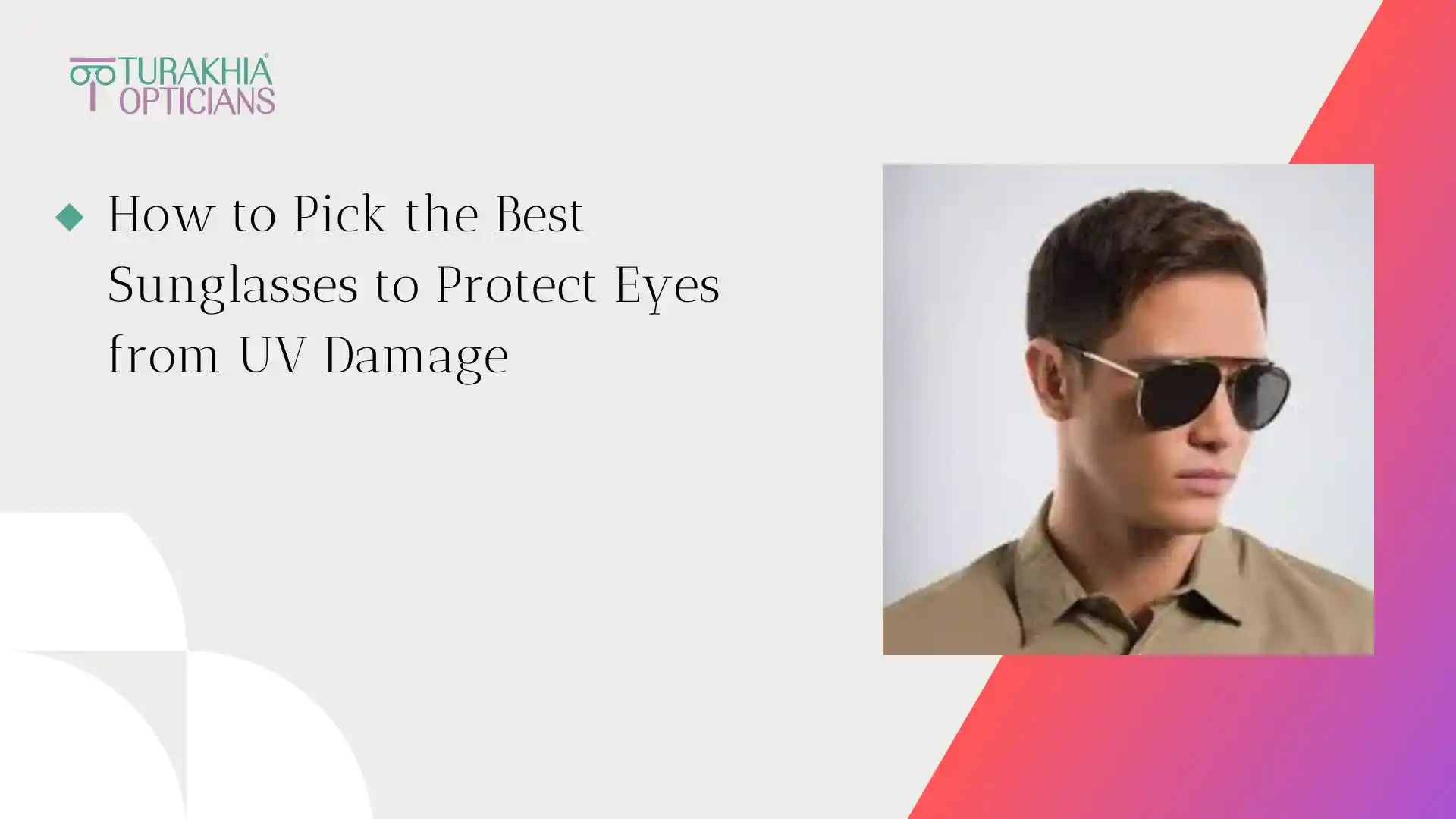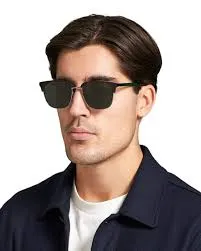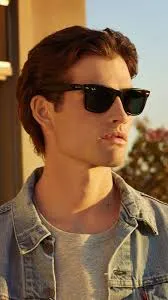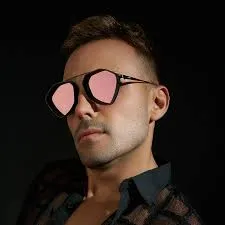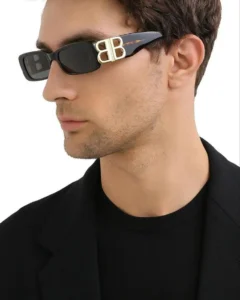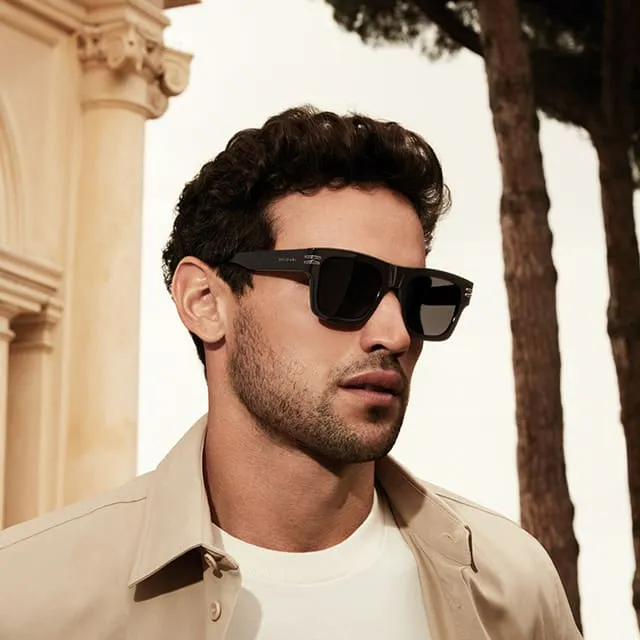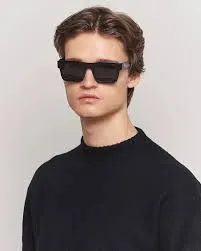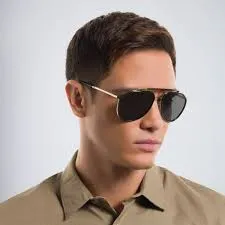You know that feeling when you put on your favourite sunglasses – instant confidence, effortless style, total summer vibes. But what if those same shades could also be your eyes’ best defence against the sun? The truth is, sunglasses do much more than complete your outfit; they quietly guard your vision from invisible rays that can harm your sight over time. Prolonged exposure to UVA and UVB radiation can lead to serious, long-term eye problems. This guide will walk you through everything you need to know to choose the best sunglasses to protect eyes from sun damage.
How UV Radiation Negatively Impacts Your Eye Health
To understand why sunglasses are so crucial, let’s break down what we’re protecting ourselves from. Solar radiation includes three types of UV rays:
UVA Rays:
These have the longest wavelength. They can pass through the cornea and reach the lens and retina inside your eye. Long-term exposure is linked to certain types of cataracts.
UVB Rays:
These are partially blocked by the ozone layer, but the ones that get through are more energetic. They are the primary cause of sunburned skin and are also absorbed by the cornea, leading to conditions like photokeratitis (a painful, but temporary, “sunburn of the eye”).
UVC Rays:
These are the most dangerous, but fortunately, they are completely filtered out by the Earth’s atmosphere and don’t reach us.
The damage from UVA and UVB is cumulative, meaning it builds up over your lifetime. It’s not just a day at the beach; it’s the daily drive to work and your lunchtime walk. This long-term exposure can lead to several significant eye issues:
Cataracts:
A clouding of the eye’s natural lens, which is a leading cause of blindness worldwide. The World Health Organisation estimates that up to 20% of cataract cases may be caused by UV exposure.
Macular Degeneration:
UV rays can damage the retina, the light-sensitive tissue at the back of your eye. This damage can contribute to age-related macular degeneration, the leading cause of vision loss in older adults.
Photokeratitis:
This is a painful, temporary condition caused by short, intense exposure to UVB rays, often from sun reflection off snow or water (sometimes called “snow blindness”). It feels like having grit in your eyes and can cause sensitivity to light.
Key Features to Look for in Sunglasses for UV Protection
Now that you know the ‘why,’ let’s get practical. When you’re shopping, use this checklist to ensure you’re getting genuine protection. This is the core sunglasses buying advice that most experts suggest.
100% UV or UV400 Protection
This is the most critical label to look for. “100% UV protection” means the lenses block all UV rays up to 400 nanometers, which covers both UVA and UVB. “UV400” is just another way of saying the same thing. If the label doesn’t explicitly state this, don’t buy them.
Lens Material
The material itself can offer inherent protection. Polycarbonate and Trivex lenses, which are common in sports and safety glasses, naturally block 100% of UV rays without needing an added coating. They are also impact-resistant, making them a fantastic, durable choice.
Lens Quality
A good lens should be optically clear, meaning it doesn’t distort your vision. A simple test is to hold the glasses at arm’s length and look through them at a straight line in the distance, like a tile floor or a door frame. Slowly move the lens across the line. If the line wobbles or curves, the lens has optical imperfections that can strain your eyes.
Wraparound or Large Frames
Think about coverage. Standard sunglasses protect from light coming straight on, but UV rays can enter from the sides and top. Wraparound styles or larger frames that sit close to your face significantly reduce this peripheral exposure, offering a much higher level of overall protection.
Polarized Lenses (with UV)
This is a common point of confusion. Polarization is not the same as UV protection. Polarized lenses have a special filter that blocks intense reflected light (glare) from surfaces like water, snow, or roads. This makes activities like driving and fishing more comfortable and safe. However, a lens can be polarized without having UV protection. Always ensure your polarized lenses also carry the 100% UV or UV400 label. Together, they create the ultimate visual comfort and safety combo.
Scratch and Impact Resistance
A scratch-resistant coating helps maintain the clarity and longevity of your lenses. If they get scratched, not only is your vision obscured, but the scratches can also compromise the UV-blocking layer. Impact resistance is a key safety feature, especially for active individuals and children.
Lens Colour, Tint, and Coating – What Actually Matters
Let’s clear up a major myth: darker lenses do not automatically mean better protection. The UV-blocking ability is a chemical applied to the lens, either as a coating or embedded within the material itself. A clear lens can have 100% UV protection, while a dark, cheap pair from a street vendor might have none, causing your pupils to dilate and actually let in more harmful UV rays.
The colour or tint of the lens is all about comfort and enhancing vision for specific activities:
Grey:
This is a neutral colour that reduces overall brightness without distorting colours. It’s an excellent all-purpose choice for driving and everyday wear.
Brown/Amber:
These tints enhance contrast and depth perception by filtering out blue light. They are great for overcast days, sports like golf and baseball, and driving.
Green:
Provides good contrast with minimal colour distortion. It also reduces glare and is comfortable for extended wear.
Special coatings add another layer of functionality:
Mirror Coating:
This is a thin, reflective layer on the front of the lens that reduces the amount of light entering your eye. It’s great for very bright conditions, but doesn’t add to UV protection.
Anti-Reflective Coating:
Often applied to the back of the lens, it prevents light from reflecting off the back surface into your eyes, reducing glare and improving visual clarity.
Photochromic Lenses:
These are the “transition” lenses that darken automatically in sunlight and clear up indoors. Most modern photochromic lenses provide 100% UV protection both indoors and out, offering incredible convenience.
Now that you know what makes a pair of sunglasses truly protective, the next step is finding ones that check all the boxes from UV safety to timeless design. The good news is, you don’t have to compromise on style to get maximum eye protection. At Turakhia Eyewear, you’ll discover luxury brands that deliver both elegance and exceptional UV sunglasses protection.
Recommended UV-Protective Sunglasses Brands from Turakhia Eyewear
At Turakhia Eyewear, you’ll find a handpicked collection of UV protective sunglasses from the world’s most loved luxury brands. We curate our collection with a focus on brands that combine impeccable style with uncompromising eye health. Here are some standout choices that offer 100% UV sunglasses protection:
Cartier:
Timeless elegance meets precision engineering. Cartier frames offer sophisticated styles with lenses that provide complete UV defence, making a powerful statement in both fashion and function.
Gucci:
For the fashion-forward individual, Gucci’s bold and iconic designs come equipped with the necessary sunglasses UVB protection to keep your eyes safe, proving that high fashion is responsible.
Ray-Ban:
A classic for a reason. From the timeless Aviator to the iconic Wayfarer, Ray-Ban lenses are built to the highest standards, ensuring they are some of the best sunglasses to protect eyes from daily sun exposure.
Vysen:
For those who value sleek, modern design, Vysen offers contemporary frames with advanced lens technology, including polarisation and full UV400 blocking.
Balenciaga:
Making an avant-garde statement doesn’t mean sacrificing safety. Balenciaga’s distinctive sunglasses are crafted with premium lenses that shield your eyes completely.
Bvlgari:
Embodying luxury and Italian craftsmanship, Bvlgari sunglasses feature elegant designs and lenses that offer superior protection against harmful rays.
Prada:
Chic and sophisticated, Prada’s sunglasses line combines cutting-edge style with practical features like 100% UV filtering, perfect for the discerning individual.
Dolce and Gabbana:
Exuberant and dramatic, D&G sunglasses make you stand out. These luxury sunglasses protect eyes from harmful UV rays while adding a touch of luxury to your everyday look.
Conclusion: Protect Your Eyes in Style
Your eyes are priceless, and protecting them from the sun is a lifelong commitment. The best sunglasses to protect eyes are the ones you’ll wear every single time you step outside. They combine essential, 100% UV-blocking technology with a style that makes you feel confident.
Don’t settle for less. Investing in a quality pair is an investment in your future vision and your present style. Explore the latest collection of UV-protective sunglasses at Turakhia Eyewear – where innovation meets elegance for your eye health. Let us help you find the perfect pair that sees you safely and stylishly through every sunny day.
FAQs
How do I know if my sunglasses protect eyes from UV rays?
Always check the label, it should clearly mention 100% UV protection or UV400. If it doesn’t, your sunglasses might not block harmful UVA and UVB rays effectively.
Are dark lenses always the best sunglasses to protect eyes?
Not necessarily! Lens colour doesn’t determine UV safety. Even clear lenses can offer full UV protection if they have the proper coating.
What type of sunglasses offer the best UVB protection?
Sunglasses that specifically mention UV400 or 100% UVB protection are the most reliable. Wraparound or larger frames also help by blocking rays from the sides.
Do polarized lenses give UV protection too?
Polarized lenses cut glare but don’t automatically block UV rays. Always make sure your polarized pair also mentions UV sunglasses protection on the label.
Where can I find stylish UV-protective sunglasses?
You can explore Turakhia Eyewear’s curated range of designer sunglasses that combine fashion and full UV protection, keeping your eyes safe and stylish every day.

